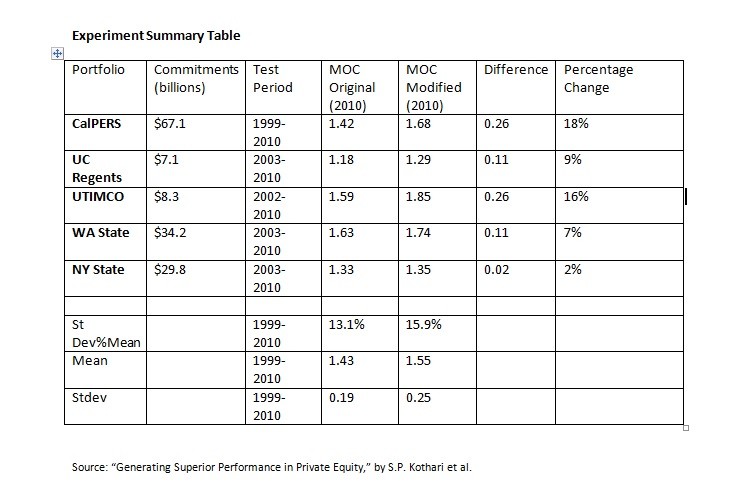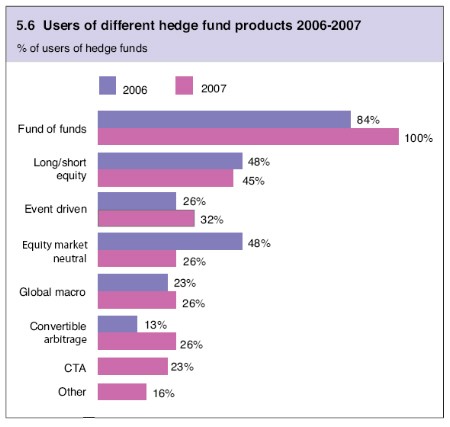AllAboutAlpha Hedge Fund Trends Alternative Investment Analysis Asset allocation Performance
Post on: 9 Апрель, 2015 No Comment

Asset Allocation & the Practical Application of Time-Window Analysis
By Andrew Smith, CAIA
Time window analysis is a version of performance analysis that takes looks at the statistical distribution of returns over different time-windows or holding periods. For example, let us say we have a fund with a 10-year track record of returns. A time window analysis would look at the return distribution of 1 day returns, 1 month returns, 3 month returns, etc on a day to day basis. So 1 month returns, for example would look at January 1 to February 1, January 2 to February 2, etc. in an effort to determine the most appropriate holding period for the fund. The shorter the time window, the larger the number of observations available, and the higher likelihood of negative returns within the time window, longer time frames would likely carry the opposite effect. The goal of the time window analysis is to determine if an investor can hold an investment long enough to significantly lower the risk of observing a negative return, and for how long the investor should hold the investment to provide them self the highest probability of a healthy positive return. Further, time window analysis allows investors to compare investments and determine which assets to hold for how long, and to determine which assets provide the highest probability over a specific holding period, of generating an acceptable return, with the lowest probability of loss.
Time window analysis begins with setting up daily prices for the investment options under observation. As an example we have attached a picture of our daily prices set up comparing the NMMacro PERA Index to the S&P 500 Total Return Index from January 3 2005 to present. For the sake of space, as the daily prices from 2005 to present would have consumed over 90 pages on a word document, we have only included the first month of prices for the NMMacro PERA index and the S&P 500 Total Return Index (base price of 1000 for comparison) to provide a sufficient example of how the excel sheet should be set up to conduct a time window analysis.
Once you have set up your daily prices, it is a simple return calculation that must be conducted. We suggest that you start with 1 day returns (if possible, 1 month returns if returns for the asset under consideration are only reported monthly, 3 month if the returns for the asset under consideration are only reported quarterly), by calculating [(day 2 price/day 1 price)-1], then [(day 3 price/day 2 price)-1], etc until you have calculated the daily return for each day being observed. Continue this process for 1 month, 3 month, 6 month, 1 year, 3 year, 5 year, 7 yr, 10yr returns, and longer if desired. Make sure to label your different holding windows to ensure there are no errors when conducting the analysis. When the calculation of the time window returns is complete, it is time to rank the returns, and determine the number of observations, the average return, and the % of positive observations.
Once you have ranked the returns for each investment option, for each holding period or time window, it is now time to determine the average returns and number of observations. If using excel rank and percentile tool, the number of observations would be equal to the final number in the Rank Column on the rank & percentile output sheet. Determine the average return by simply using the [=average(observation 1: final observation)] on excel. Determine the % of positive observations with the following calculation [=(final positive observation rank/worst return rank)] and the output will provide you the % of positive observations. Below is an example of the final outputs of a Time Window Analysis comparing the S&P 500 to the NMMacro PERA Index.
What do these numbers, the final outputs of the Time Window Analysis mean? How does one utilize these outputs to determine the appropriate percentage of assets to allocate to various investment opportunities and the appropriate holding period for each opportunity?

Each investor has different goals for their portfolio, different holding periods for their allocation, and different risk tolerance. Utilizing the table above, investors seeking a shorter holding period, 1 month to 1 year, and focused solely on generating a non-negative return would likely be guided to allocate a larger percentage of assets to the S&P 500, whereas an investor seeking a long term investment goal, 3 10 years, or investors seeking to generate the highest risk adjusted returns would be better suited allocating a larger percentage of their assets to the NMMacro PERA Index. Further, investors with the goal of minimizing, and potentially eliminating the probability of negative returns would likely determine the appropriate holding period for the NMMacro PERA index to be 5 10 years, as the PERA index has generated a positive return on 100% of the observed returns over a 5 year or longer holding period. Sticking with the same theme, an investor in the S&P 500 would determine they should hold their investment for a minimum of 7 years or longer for the best opportunity to minimize and potentially eliminate the probability of taking a loss from their investment.
What if an investor is solely concerned with allocating to the opportunity with the highest probability of generating the best return would observe the average return over each time window for each investment opportunity under consideration? This investor would come to the conclusion that allocating to the PERA index over each time frame except for a 3 month holding period would be the best option to attempt to generate the best possible return.
Investors would be wise to compare investments using a time-window analysis in an effort to become a more sophisticated, informed, data/evidence based investor. Whether seeking to minimize risk or maximize return, investors must determine their appropriate holding period for each investment ahead of allocating. Further, they must determine the percentage of their portfolio to allocate to various asset classes and investment options within each asset class. While time-window analysis is not sufficient in making this determination as a stand-alone performance measurement, it is a necessary allocation tool, and is both powerful enough for the largest institutions and simple enough for the average retail investor. New Millennium Macro utilizes a time window analysis whenever researching or providing consultation on a particular investment opportunity, or an asset class as a whole. It would be prudent of any investor to do the same.
Born & raised in Miami, Florida, Andrew N. Smith, CAIA, began his career in finance as a currency trader with a proprietary group based in Chicago, IL called ProTrading. Andrew moved, after 2 years, to a more institutional setting with an emerging global macro manager, TAM Global Macro. Realizing that trading was not the most stable of careers, Andrew decided the research side of the business fit his personality and intellect better, and launched NMMacro, originally to aide HNW individuals and families in accessing institutional quality alternative assets. Working with 2 families, one based in Miami, FL, and one in Denver, CO, Andrew found that there was a keen interest among these types of investors, in accessing private business investments. To aide in the process of acquiring private businesses, Andrew developed an index model to compare these opportunities to similar publicly traded opportunities. NMMacro was soon contracted by a small multi-family office based in Newport Beach, CA, to provide these consultation services. Realizing the index model & methodology he had developed presented itself as a superior investment opportunity, not only to the private investments it was being compared to, but also versus many major market indices, Andrew & brother/business partner William decided to launch the index as a live, listed index. The NMMacro PERA index can be tracked live via Yahoo Finance, by simply searching NMMacro PERA, and is available on the Reuters Eikon Terminal under the symbol .PERA. Andrew officially earned the CAIA designation in October 2013, and is set to join the CAIA Association LA Chapter Steering Committee in January 2015. Andrew currently resides in Los Angeles, California, and can be contacted via email at andrew@nmmacro.com














